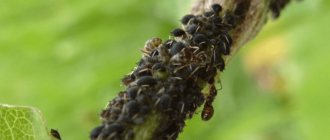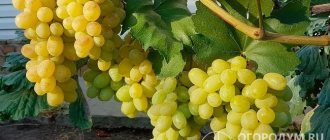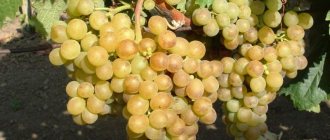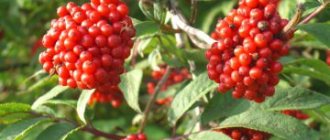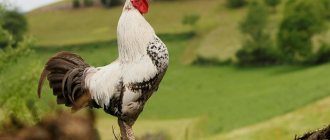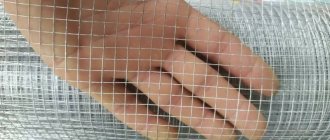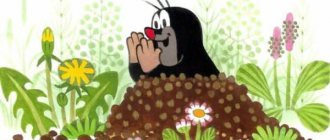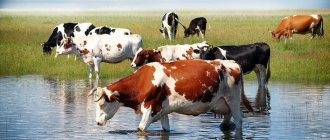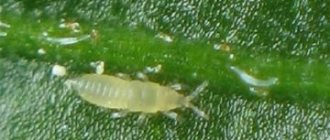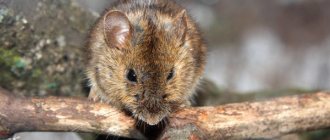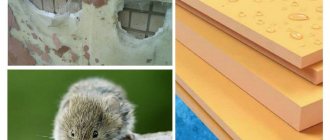There are several proven methods for getting rid of wasps on grapes. However, before you do this, you need to evaluate the pros and cons. Wasps eat the pulp of the berries, suck out the juices, and spoil entire bunches. At the puncture sites, the grapes begin to ferment and rot. The presence of wasps in the vineyard protects the crop from aphids, ants, bugs, and many other parasites. After the complete disappearance of the aspen family, the likelihood of infection of the crop with other, more dangerous pests increases.
Mechanical destruction
You can save grapes from wasps and bees even before they appear on the site in large numbers. It is necessary to carefully inspect the area for the presence of nests. Ground wasps are poured with boiling water, doused with flammable substances, and set on fire. If the nest is located under the roof of outbuildings, in the attic, it is easier to drown it. They fill a bucket of water, carefully approach the wasp’s house, and quickly dip it in the water.
Traps
Ordinary plastic drink bottles will help protect grapes from wasps. The process of making a trap does not take much time and does not require special skill. In one trap, from several dozen to hundreds of individuals are caught per day.
- Cut off the neck of the bottle and turn it inside like a watering can.
- Fix with tape, adhesive tape, or stapler.
- Bait for wasps is placed inside. Insects like fruit, sugar syrup, honey, jam, lemonade, kvass, and beer.
- Hanging wasp traps throughout the vineyard.
The method does not provide 100% protection, but it significantly reduces the extent of damage to berries and prevents mass attacks.
On a note!
Sticky insect traps are sold ready-made. They have bright colors to attract pests and impressive sizes. You can do it yourself at home, using a sheet of plywood, plastic, or oilcloth as a base. A thick layer of non-drying glue is applied on top. Hang it around the area.
Insect traps
Grids
If wasps eat grapes already at the ripening stage, you can protect the berries using special nets. The method is great for small areas where the number of bushes does not exceed 5 pieces. The bunches of grapes are immersed in a transparent mesh and a string is tightened on top. Such uniforms do not interfere with the ripening of the crop and prevent pests. The main disadvantage of the method is labor intensity. Each bunch of grapes must be sealed. Nets protect against wasps and birds.
Repellent
To protect grapes from wasps during their ripening, you need to know what they are afraid of. This can be done using products with a strong smell. The advantage of the method is accessibility and absolute safety. The disadvantage is the minimum validity period. Protection remains as long as the aroma is present.
- Grape, apple, and table vinegar are used for wasps. To prepare a solution, add 100 ml of vinegar to 1 liter of cold water. The grapes should be sprayed early in the morning.
- Soda against wasps is used during the ripening period of berries, when the use of chemical means of protection is prohibited. A soda solution increases the sugar content of berries, prevents the formation of rot, promotes the healing of berries after punctures by insects with proboscis, and helps repel wasps. For 10 liters of cold water you will need 5 tbsp. spoons of baking soda, 20 ml of liquid laundry soap. It is necessary to treat grapes against wasps in the evening or early in the morning.
- Liquid smoke, which is used for smoking fish and meat, will help scare away wasps from grapes. Soak the soil. The action continues as long as the smell is present.
The repellent method can be combined with other control methods to increase effectiveness. If wasps attack grapes, you need to act immediately. A small colony of pests can ruin a small vineyard in a few days. Spraying the solution is allowed during any period of crop cultivation.
Varieties that don't eat wasps
Wasps love not only sweet, but also thin-skinned grapes. Sweet and sour berries with a thick skin will fly around them.
Grape varieties that will not cause problems with wasp attacks:
- Adams;
- Dion;
- Cardinal of Moldova;
- Mascot;
- Anniversary of the Kherson summer resident;
- Matrix;
- Blagovest.
Cardinal of Moldova
Reference! Pests will not like the berries, so you won’t have to treat the crop with chemicals or make numerous baits.
Chemistry against insects
The grape harvest is saved with special insecticidal preparations and poisonous baits. Timely processing protects the berries from wasps and flies, and many other pests.
Using chemicals directly to process berries is permitted if there are more than 20 days left before harvest. Before eating, the grapes should be washed thoroughly. Poison mixed with bait, placed in the vineyard not on the berries, can be used at any time during the plant’s growing season.
Boric acid
Boric acid against wasps in the vineyard
One of the proven means of folk “medicine” is the use of boric acid. The product is sold in pharmacies in the form of a white crystalline powder. Has intestinal effects. The action begins after entering the stomach. Causes muscle paralysis and death. The proportions of boric acid from wasps should be such as not to interrupt the taste of the bait.
To prepare the solution, you need to dissolve a 10 g bag of boric acid in 1 liter of cold water. Stir until the crystals are completely dissolved. The finished product is odorless and, when combined correctly with bait, does not change the taste of food. Add 1 tbsp to each bait. a spoonful of poison solution.
On a note!
As an additional ingredient, sour jam, juice, lemonade, kvass, beer, honey, and sugar syrup are used.
Insecticides
It is recommended to use odorless preparations for vineyards against wasps, so that the persistent aroma does not repel pests. The goal in this case is to kill, not drive away. If wasps have attacked grapes and continue to pester them, treat the bunches with a solution of insecticides diluted in accordance with the instructions.
The solution is prepared immediately before use. The maximum effect lasts 4 hours, the residual effect lasts from 14 to 30 days. Initially, the poison acts through contact. Insects die within 5-15 minutes from muscle paralysis. The poison is then absorbed by the tissues and kills pests as they feed.
If wasps eat grapes, the crop should be treated with modern, effective, odorless insecticidal preparations - Lambda Zone, Get, Delta Zone. Sold in concentrate form. When working with drugs, you need to use rubber gloves, a protective suit, and a respirator.
Insecticides for wasps
Important!
The prepared solution is also mixed into the bait, poured into a saucer, and placed in the vineyard. When using poison, you must observe safety measures for yourself and your environment. Prevent the death of beneficial insects, birds, and animals. The drugs are deadly to bees and should not be used during flowering.
Damage caused by wasps
Garden pests attack large areas of vineyards during fruit ripening. They eat all the pulp, leaving only the skin of the berries. Much damage occurs due to bitten fruits. Damaged grapes begin to deteriorate and then rot. Those who grow grapes for sale suffer losses. If you do not start protecting the grapes in time, you can lose about 65% of the harvest.
It is interesting that insects do not attack all varieties. Wasps prefer berries that have thin skin. It’s difficult for them to break through the thick skin, so they just gnaw them and fly off to look for ripe and juicy grapes.
Tips for fighting wasps from experienced specialists
To get rid of pests on your own plot and protect the berries from damage, winegrowers advise the following:
- Destroy nests in autumn or early spring.
- Homemade traps made from plastic bottles and adhesive sheets significantly reduce the number of pests.
- As bait in the spring and early summer, it is better to use protein foods - meat, fish. Wasps obtain food for their growing larvae, which require large amounts of protein. Products are sprinkled with boric acid or watered with an insecticide solution.
- A solution of baking soda and soap can protect the berries from attack. The product enters the body through a bite and repels with a bitter aftertaste. In the stomach, soda causes increased gas formation, which is dangerous for insects. Spraying is carried out at any stage of the growing season. You can spray the solution using a household spray bottle or spray bottle.
To increase the effectiveness of each method, it is recommended to combine several control methods at once. For small vineyards, reliable protection will be a net that prevents wasps, flies, birds, and other pests from reaching the berries.
Features and Tips
The most practical and effective advice: remember about prevention! It’s common to deal with a problem when it hits your toes, but it’s easier to eliminate its appearance in advance. Here are some tips to prevent grape spoilage:
- At the beginning of summer, feel free to set traps, then there are much fewer insects, and it is easier to destroy nearby nests.
- When more or less formed bunches appear, put on mesh bags. The process is labor-intensive, but will provide lasting protection without interfering with the grapes' growth.
- Try to put in more effort: build an indoor vineyard from scrap materials; it’s definitely not afraid of pests!
Remember: the basis of the fight is always complexity, so use several methods/substances at once, this will give a greater chance of defeating the vineyard parasites.
Chemicals
Sometimes it is not possible to get rid of wasps without chemical treatment and therefore you have to spray the bushes with special preparations. Before using pest control products, you need to understand how and with what grapes are processed.
Insecticides
When processing grapes, insecticidal preparations that have no odor are used. If you use such means, the wasps will die immediately after attacking the bushes. Before using insecticides, you should understand the nuances of preparing the working solution. To create it, you will have to add about 50-80 grams of the drug to ten liters of water, after which you can spray the seedlings.
The protective effect of a one-time treatment lasts more than 30 days, and therefore repeated spraying with an insecticide solution is carried out after a month.
Boric acid
Boric acid is considered a reliable folk remedy for eliminating wasps from vineyards. This solution has an intestinal effect, due to which the pests die immediately after the product penetrates their stomach. Under the influence of boric acid, the muscles of wasps are paralyzed, which leads to their death.
When creating a spray product, 25 grams of acid are added to two liters of water. The liquid is thoroughly stirred for about five minutes to dissolve the crystals.
Feedback on the methods used
It is quite possible to protect bunches of grapes from wasps. Of course, this will require additional time, effort and money from the gardener, but the harvest of undamaged berries will pay off all the efforts. Experienced gardeners recommend different methods; it is better to use several methods in combination.
Protection of grapes begins before the fruiting period. Before planting and pruning the vines, the land area is cleared. If there are no wasp nests nearby, dig up the soil additionally. These activities help destroy insect larvae. Pests multiply quickly, so the vineyards must be inspected once every 2 weeks.
How to save grapes from wasps if they have already appeared on the land:
- destroy nests where bees swarm;
- divert their attention from the vineyard;
- catch pests using traps;
- scare away insects with sound.
If the wasps do not leave the land after carrying out basic methods, insecticides and other preparations that kill insects are used.
You cannot completely get rid of insects: in the first months they are beneficial, destroying caterpillars and harmful beetles. Protection from wasps is needed only towards the end of summer, when the bunches are fully ripe.
Destruction of nests
The fastest and most radical way to get rid of the problem with your own hands is to destroy the nest of wasps or bees. It is especially difficult to detect a nest on large plots of land located near forests or orchards. Before destroying a bee nest, a person prepares:
- exposed areas of the body need protection: if you anger a swarm of bees, you can get hurt;
- the method of destroying the nest is chosen: the hive cannot simply be knocked down or stirred up;
- a chemical agent is selected that will quickly destroy the entire swarm.
Burning a bee's nest is ineffective. Most of the swarm will have time to leave the nest and find a new shelter near the vineyard. Weakened individuals will further damage the crop: bees will need more food to restore the population.
During the ripening of the crop, the nest is sprayed with dichlorvos (it is better to use a spray can). To prevent pests from hiding in the trellis, the holes are carefully closed. For this purpose, polyurethane foam is used.
Distraction
Wasps can be distracted
To protect the crop, a distraction method is used. Wasps eat the fruits of not only grapes, but also other crops. To protect the fragrant bunches, the vine is planted near flowering fruit trees.
During the ripening period, vessels with syrup are placed next to the plant, which also attract bees.
This trick is useful only when a small amount of the crop is ripening.
Smell repellent
A strong smell will help protect grapes from wasps. The bee is a sensitive insect that does not respond well to heavy scents.
The best protection for vineyards in the garden is liquid smoke. This is a concentrated solution that imitates the smell of natural smoking.
To produce the drug, condensed smoke from deciduous trees is used. The form of release of the product to save the vineyard from pests is a powder or water-based substance. Less commonly, liquid smoke is produced using alcohol.
We suggest you read: Scabies mite in cats in Rostov-on-Don
Control with such a substance is effective only until the bee tastes the fruit. If there are a lot of bees, the smoke does not scare away all the bees. Spraying the vines with substances with a pronounced odor helps preserve the harvest.
For these purposes, use pine infusion or garlic juice concentrate. This method is effective, but after spraying the fruits may absorb some of the liquid, so the taste and aroma of the berries will be spoiled.
Setting traps
If pests eat crops, the most effective way to control them is to set traps. Traps are hand-made devices that trap pests. The trap attracts pests with a sweet smell. The basis for it is a plastic bottle or other transparent vessel in the house. The device is installed in the vineyard or along the outer perimeter (the number of traps depends on the size of the land plot).
Traps for grapes from wasps and bees are prepared according to a simple principle:
- the top of a plastic bottle is cut off;
- the remaining piece of plastic is used as the bottom, and the bottle is turned over;
- the parts are tightly connected;
- Homemade bait is poured inside the device.
For a homemade trap, a honey or sugar mixture will be useful. Resourceful gardeners use fermented jam. To prepare a simple trap you will need 0.5 liters of regular beer, 2 tablespoons of sugar. The ingredients are mixed and poured into the device.
A solution of white wine and mint syrup also helps fight pests. The bait in the vineyard is periodically changed (dead pests are removed and a fresh sweet solution is poured in). Homemade devices are effective and safe for the crop.
Bags for grapes
Nets will prevent insects from harming you
Bags for protecting grapes from wasps are effective and simple devices. They are bags or meshes (their size is adjustable). With bags it is possible to repel insects from the crop without additional costs and without the use of chemicals.
The self-regulating net helps protect fruits from flies, bees and birds. If the pests do not find a food source, they leave the nest and fly to other areas of land (bags to protect grapes from wasps serve as effective prevention until the bunches ripen).
Bags allow you to protect the crop from:
- pests;
- sunburn;
- mechanical damage;
- bad weather (strong wind).
To ward off pests, you can buy a net in a store or make it yourself. For reusable bags, anti-mosquito fabric is used: bags are sewn from it in the shape of an inverted Christmas tree with ties at the top. After disinfection (after harvesting), the nets are reused.
Saving grapes from pests
It is not uncommon to find a gardener or farmer complaining that wasps are destroying his grape harvest. Of course, they are making attempts to fight them, but the results are far from desired.
Traps or hanging syrup bottles have no effect. And embroidering bags for each bunch looks too labor-intensive. If you give up and don’t resist the wasps, then it will be very easy to lose the entire harvest.
As an alternative way to combat wasps in the vineyard, the following option can be offered. As soon as the grapes begin to ripen, plastic bottles cut in half should be hung throughout the vineyard.
The upper part of the bottles is discarded, and only the lower part remains, which is tied on a trellis to the wire. These half bottles are filled with old jam diluted with water. Now, the main thing is to add the desired ingredient. An insecticide is added to this jam to combat caterpillars.
Preventive measures
Experienced beekeepers know that the best way to protect a hive from any misfortune is a strong bee colony. She needs to be provided with a complete food supply and good living conditions. The family must have a young, highly productive queen. She gives more offspring. The hives should be insulated so that the bees do not have to waste energy heating the brood.
A strong family is able to cope with the invaders on its own. She can even repel an attack from hornets. The dimensions of the European hornet are 22-25 mm, they are not much larger than honey insects. In countries where aggressors reach 50-70 mm, local bees have developed special battle tactics. They surround the hornet in a dense ball of several hundred individuals. Thanks to the movement of the bodies and the vibration of the wings, the temperature inside the swarm rises to 47 0. The heat quickly kills the predator. After two or three minutes, the bees fly away and the hornet falls dead.
There are no similar posts
To prevent a hive from appearing in the country
If the wasps appeared once, then after the destruction of the hive they can return to their original place. Therefore, measures must be taken to prevent reoccupation.
- You should leave sweets out in the open air less often. Close them tightly so as not to signal the wasps about tasty food.
- Repair your dacha and outbuildings so that there are no hidden places in the walls or floors where insects can set up their homes.
- Treat potential nesting areas (under the roof, attic) with special repellent chemicals.
- Specialized stores sell wasp nest simulators. The essence of scaring is that wasps do not risk settling in places where there are already “competitors”.
Grapes 168. Re: Alexander Sopin. Experience in growing grapes in the Moscow region
Hello colleagues! Every spring is unique in relation to grapes... And now it’s the very end of March (today is the 31st), the third month of the year is ending... In general, the wintering conditions for grapes were quite decent. Some stress at the beginning of January, associated with a snowless period and quite severe frosts, passed as soon as the snow fell and the soil temperature stabilized within non-critical limits. The temperature in the air of the grape shelters also dropped no lower than -7*C. Although February and March were “ragged” in temperature, our frosts were surprisingly mild. 1. Today I opened the grapes in the greenhouse for inspection and immediately discovered that I was late - all the vines were covered with a white fluff like mold.
IMG_5146-1.JPG
True, two hours after drying, the mold was removed, but an unpleasant aftertaste remained: it was necessary to open earlier. Very high temperatures during the day in the greenhouse (up to +30*C) contributed to the very rapid heating of the space under the shelter: with high humidity and temperature, mold develops on the vines inevitably. It’s okay, these are not the same fungi that threaten us in the future, but they shouldn’t be allowed to happen. In general, all the vines are ripened, alive, there is no damage from rodents (still - 6 cats guarding the grapes!), the impression of wintering the grapes in the greenhouse is excellent. 2. The second discovery was that the vines were crying when cut: Livia, Romeo, Kishmish Stoletie, Swallowtail, Harmony KLA - all in tears, and on some varieties the green tips of the buds were already visible.
IMG_5149-1.JPG
Some varieties are not yet crying, but the conditions there are not yet appropriate - the ground is partially frozen. But for the “crying” ones the soil temperature is as follows: -0 cm......+8.6 * C; -20 cm……+2.4*С; -40 cm……+1.2*С. As we see, the cherished and textbook +10*C is still far away. Apparently, the dew roots of the upper horizon are at work. 3. It’s gratifying that my first spring flowers, galanthus, broke through the ice. They are always the first on my site. They are not afraid of 10 cm of ice, night frosts - this is how to get through thorns to the sun...
IMG_5145-1.JPG In general, today is a truly spring day in my vineyard... And the mood matches!
Poisonous baits
An alternative to simple traps is the use of poisoned baits. Here are three proven methods:
Use of fly agaric mushroom . The fly agaric cap is thoroughly crushed and boiled for three minutes in a mixture of 100 g of honey and 250 ml of water. Poison should not be placed in the apiary during active summer! It is better to place the bait near the wasp colony. Then, after poisoning, the predators will have time to get to the nests and feed the bait to the larvae. As a result, the entire colony will die.
Read also: Beekeeping: swarming of bees and measures to prevent it
Attention: all work with fly agaric must be done with gloves.
Using dust . The event is held in the fall, when there is no active summer in the apiary. The hive entrances must be closed! During work, extreme care must be taken to ensure that bee colonies are not harmed. Deep plates are greased with a thin layer of honey and sprinkled with dust (DDT). Then the bait is placed in those places in the apiary that were most visited by female wasps. For 50 bee colonies, 3-5 plates of dust are enough. Predators willingly sit on the bait and soon die. The method gives good results after just three days - the pests almost completely disappear.
Important: as the sun rises and the air temperature rises, all plates are removed from the apiary and the entrances are opened.
The use of chlorophos . To attract philants, you need to hang 200 g of meat on a tree branch near the hives. The bait is located approximately 50-60 cm from the ground surface. Predators quickly find meat and willingly gather in this place. The next day, the bait is treated with chlorophos solution, and a bucket of water is placed under the meat. Paralyzed philants fall into the water and die. With a strong colony of predators, in one day you can collect up to 100 philanthus, 300 wasps and 50-60 hornets in this way.
Share a link to the article on social networks:
Negative aspects of physical protection
To summarize, the weaknesses of physical protection against wasps become obvious.
- The complexity of installation makes the procedure lengthy.
- The cost of the material will seriously hit the pockets of owners of large vineyards.
- To ensure longevity of the protection, it must be stored appropriately.
In general, there are not as many disadvantages as in other cases. This will provide the owner with a magnificent harvest without requiring the destruction of wasps.
Main advantages
Wasps, bees, birds are representatives of wildlife. They are only interested in their own well-being. They don't think about people's wealth. If one individual gets into the habit, you should expect the rest to appear soon. Some birds, of course, get their food alone. But insects most often act in groups.
Birds, wasps and bees eat grapes with pleasure. The leftovers from the meal, however, look unattractive. If they liked the variety, they will not calm down until they are driven away. The main thing for them is to find a stable source of food not far from the hive or nest. This guarantees the success of the species, survival, population growth, dominance.
Special bags are an ideal tool for protecting grape bunches from pests
Special bags are an ideal tool for protecting grape bunches from pests. They have many advantages compared to other methods. In particular:
- simplicity;
- availability;
- beauty;
- efficiency.
Safety nets
If wasps attack grapes while they are ripening, you can protect the crop with special mesh bags. This method is especially effective when caring for a small vineyard. Nets are sold in stores and are small bags or polypropylene with tiny holes.
A bag like this is put on each bunch and then tied tightly. The net does not interfere with the ripening of the crop, but the wasps do not have access to the berries. The bunches are also protected from birds in this way.
An absolutely environmentally friendly and harvest-safe option. The disadvantage of the method is that it is labor intensive. After all, you need to go around the entire vineyard without missing a single bunch. If there are a lot of bushes, the method will be too troublesome.
Interestingly, before special polypropylene nets appeared on the market, winegrowers placed grapes in self-made bags made from women’s nylon tights.
However, since nylon has tightening properties, the berries were often squeezed inside such bags. With the invention of new high-tech materials, the issue was resolved. And today you can find polypropylene nets on sale with a volume of one liter and three liters.
If it is not possible to purchase special bags, you can make them yourself: not from nylon, but from gauze. One layer is taken, the volume should be with a reserve. The downside is that it is labor intensive and the gauze gets wet during watering and rain. When wet, the fabric increases the risk of fungal and putrefactive diseases of grapes.
